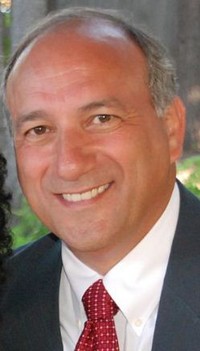Viewpoint: What are we doing about Rx painkiller abuse?
Ron Guido, 09-Jun-2014
 This epidemic of addiction to opioids should never have been allowed to take root in the prescription medicines industry and, now that it is deeply rooted in our society, we must take full responsibility to explant it.
This epidemic of addiction to opioids should never have been allowed to take root in the prescription medicines industry and, now that it is deeply rooted in our society, we must take full responsibility to explant it.
Those of us who have chosen a vocation in human health care, take pride in being associated with products and services which diagnose and treat health concerns. In addition, we refer to the health care business as one that is "regulated", meaning that extra care is taken to safeguard the development, approval, commercialization and delivery of such products and services. So why are tens of thousands of people dying annually from abuse and misuse of drugs that pass through this veil of protection in full view of the doctors, regulators, manufacturers and dispensers that help place them in the hands of our citizens?
Let's start with the concept of pain relief. Pain is a condition, not a disease. While inflammation can be imaged and diagnosed, it is much more difficult to assess the presence of pain associated with a condition, injury or intervention. For reasons we can't explain, different people have different tolerance levels of pain so we accept their measures of pain intensity using a highly subjective scales, like the Wong-Baker smiley faces. We even dignify pain self-assessment by calling it the fifth vital sign. But the default protocol applied to such a subjective diagnosis is (too) often aggressive painkiller therapy and (too) many scripts are written simply because a patient has acknowledged the presence of pain. In other instances patients being transported to a post-operative recovery room will find an opioid prescription awaiting them even before pain is acknowledged.
Which brings me to a few counter-intuitive observations about the perpetuation of this tragic epidemic:
- Pain relief drugs are not curative; they simply mask the trigger points of pain so why are we even labeling them "medicinal"?
- Why does a prescription pad become the first line of therapy for pain without considering non-addictive treatments like heat, cold, exercise, homeopathic remedies or the least expensive strategy of all…do nothing?
- Why would a regulatory body approve so many such dangerous doses without strict risk-mitigating requirements governing their handling and distribution?
- Why are so many physicians and their credentialed staff prescribing painkillers with little or no knowledge of addiction or without testing individual patients for their psychological response to such drugs?
- And why are manufacturers so complacent about the linear relationship between their marketing efforts and deaths due to addiction?
Using the familiar African proverb, "It takes a village to raise a child" as inspiration, I submit that it will take a unified effort by all parties in pharmaceutical supply industry to save a patient from a painkiller-induced death.In a coordinated fashion, let's re-examine the people, processes and technologies that are knowingly contributing to abuse and misuse of these drugs.By applying appropriately designed changes to the current systems and embedding tracking mechanisms to shepherd unit doses from manufacturers to compliant patients, we can hopefully eradicate a tragic oxymoron from our society…."death by medicine".
Interested in learning more? Download this white paper.
Ron Guido is president of LifeCare Services, LLC and serves as a consultant to Covectra
Related articles:

©
SecuringIndustry.com





